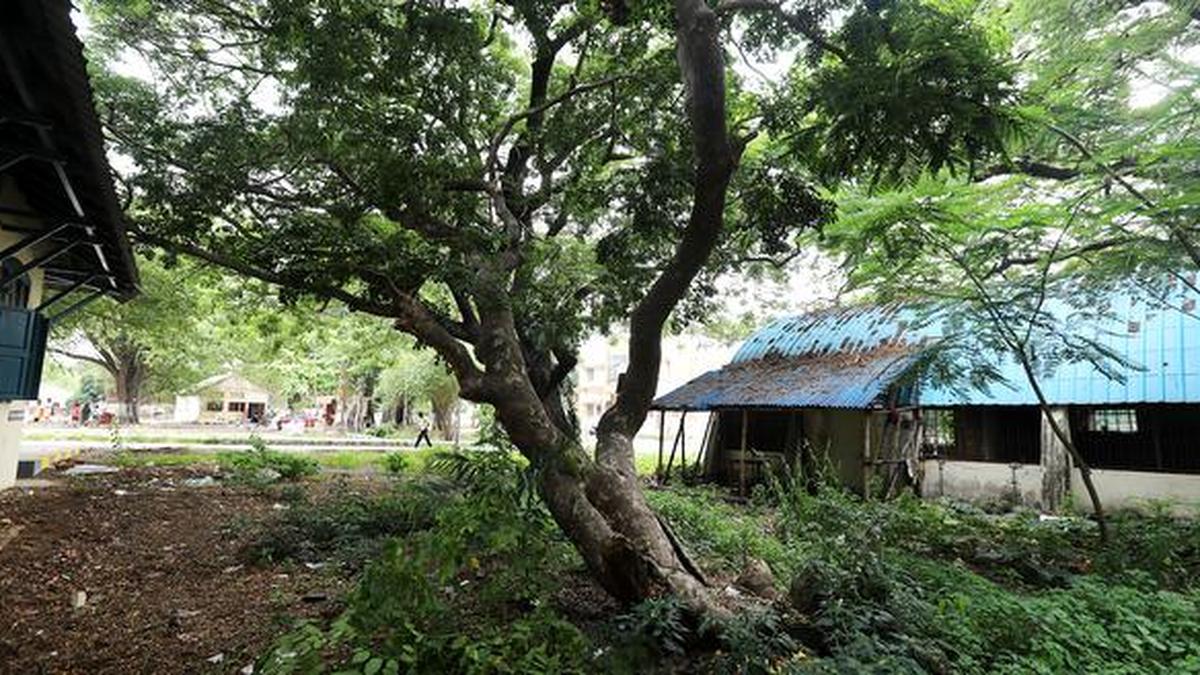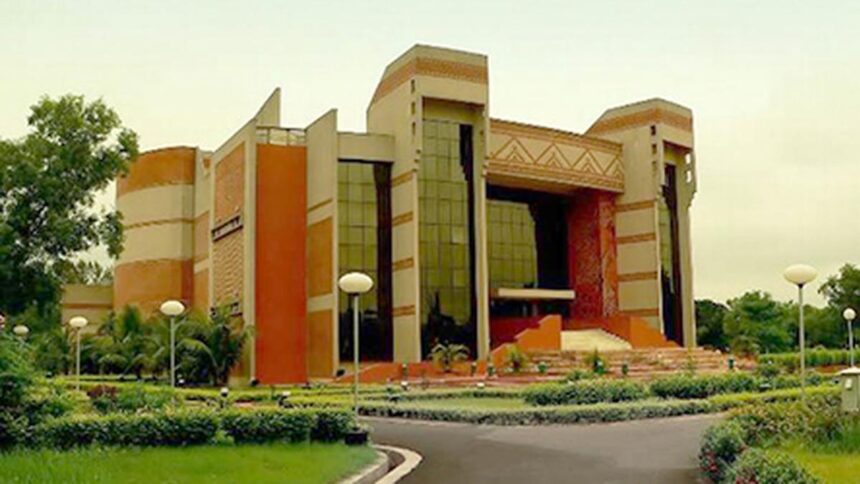
A Roughbark lignum-vitae at Queen Mary’s College. Photos: Prince Frederick PRINCE FREDERICK
| Photo Credit: PRINCE FREDERICK
The surest way to lose something valuable is to persist in ignorance about its value. Viewed from an ecological viewpoint, Roughbark lignum-vitae (Guaiacum officinale) might not belong to these parts. But if one accorded natural history the place it deserves but is often denied, sometimes wilfully, this Roughbark lignum-vitae needs to be made welcome, felt at home in the handful of earth in Chennai it has claimed as its own.
Exotic trees have become naturalised in their adopted landscapes and are readily identified. The Roughbark lignum-vitae has not achieved that level of familiarity in Chennai; there is just a scattering of them in the city. And this clutch needs to be zealously guarded as this tree is faced with dwindling numbers everywhere. It is rare not just in Chennai, but even in lands where it is considered native.
According to IUCN, the tree is endangered, exploitation of the tree for its wood (said to have been the densest in the world) having reached the tipping point.

T.D. Babu, member of the Chennai District Green Committee, points out that the base of the tree bears scars of the past, having been scorched.
| Photo Credit:
PRINCE FREDERICK
“A small evergreen tree native to South America, it is reported to have been introduced to our parts in the 16th century. It “adoption” could have been the result of the ornamental value it brought to a landscape: it puts out striking bluish purple flowers that attract butterflies and has bright yellow-orange fruits. In Tamil, it is called seemai vairamaram,” says T.D. Babu, a member of the Chennai District Green Committee and a key member of tree conservation organisation Nizhal.
Babu underlines its special features — “considered densest and water-proof, this tree’s has been used in ship building. Its resin and bark are said to have medicinal properties. These factors led to its commercial exploitation and dwindling numbers.”
In light of the threat of extinction faced by this tree, one would expect more care to be given to the clutch of Roughbark lignum-vitae trees found in Chennai.
One of them has the Queen Mary’s College Campus for an address. Babu notes that the base of the tree has suffered damage, not natural but human-inflicted in the past. It also displays “wounds” further up its gnarled frame — an amputated branch. Babu wants the state of the tree’s precincts to reflect its preciousness. Currently, the earth it stands in is overrun with weeds. This is the status report about this tree at Queen Mary’s College campus as on August 8, 2025. Besides, on that day, this Roughbark lignum-vitae was wearing a nameboard not meant for it; one erroneously identifying it as a Ficus benghalensis moraceae (banyan tree).
Babu explains why this tree at Queen Mary’s College should be placed within an impregnable hedge of protection.
“In Chennai we lost a huge Roughbark lignum-vitae tree in a private property, a perfume factory in Adyar. Another massive tree on Swamy Sivananda Salai . We are now left with this one near the canteen at Queen Marys College campus; another inside Rostrevor Gardens, a railways quarters Anna salai; one more large tree inside Kalaingnar Poonga on Radhakrishnan Salai. There is a young Roughbark lignum-vitae each at Kalakshethra campus in Thiruvanmiyur and Lady Willington Institute of Advanced Study in Education at Kamarajar Sala. Outside Chennai, twin Roughbark lignum-vitae trees are found on the campus of Tamil Nadu Agriculture University in Coimbatore.”
Published – August 11, 2025 08:26 am IST























